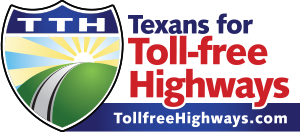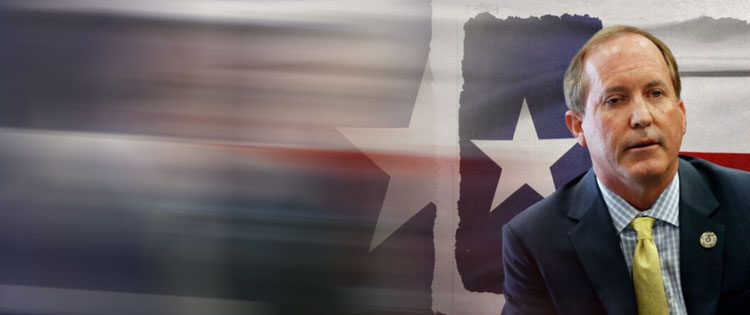Also see this Politico article that shows near universal opposition to the plan by Trump, unions, and bipartisan members of congress here.
Trump Tower is in the congestion zone. Trump vows to fight it here.
Link to article here.
Nation’s first congestion toll now active in Manhattan
ABC Eyewitness News
January 6, 2025
Watch the story here.
MANHATTAN, New York City (WABC) — For many New Yorkers, Monday was the first day back to work following the holiday break, and for a swath of commuters, it was also the first time they paid the new congestion pricing toll to enter Manhattan below 60th Street.
On Monday, Gov. Kathy Hochul vowed to closely study congestion pricing data, and make changes to the program, if needed.
“I am committed and the MTA is committed to intensely monitoring the trends, and if adjustments are necessary, to be willing to make those going forward,” she said.
“Traffic is down today,” but Hochul noted it is also snowing. “Today is the first day. I wouldn’t count today, let’s give it a few days to sink in and get a trend.”
WATCH | NJ drivers discuss impact of congestion pricing on commute
Anthony Johnson has more on the impact of congestion pricing on New Jersey drivers entering Manhattan.
New York City’s new congestion pricing toll began on Sunday, meaning many people will pay $9 to access the busiest part of the Big Apple during peak hours.
The toll is meant to reduce traffic gridlock in the densely packed city while raising money to help fix its ailing public transit infrastructure.
New Jersey’s request for a temporary restraining order was denied by a federal judge on Friday. New Jersey Governor Phil Murphy’s office plans to appeal the ruling.
Congestion pricing was designed to raise money for the MTA’s capital plan, while reducing traffic in Midtown, by tolling drivers in Manhattan south of 60th Street.
N.J. Burkett has the latest with MTA CEO Janno Lieber.
Here’s the breakdown of how congestion pricing works:
Time of day
The peak period toll rate will apply from 5 a.m. to 9 p.m. on weekdays, and from 9 a.m. to 9 p.m. on weekends. The overnight toll rates will be 75% less than the respective rates in the standard peak period for all drivers entering the Congestion Relief Zone.
Type of vehicle
Passenger and small commercial vehicles, and motorcycles (see passenger reaction here)
The toll for passenger and small commercial vehicles (sedans, SUVs, pick-up trucks, and small vans) paying with a valid E-ZPass will be $9 during the peak period and $2.25 during the overnight period, when there is less congestion. The toll for motorcycles will be $4.50 during the peak period and $1.05 during the overnight period. These vehicles will be charged only once per day.
Michelle Charlesworth has more on reaction from drivers on the first weekday of congestion pricing tolling.
Trucks and buses
Small trucks (single-unit trucks) and some buses will pay a toll of $14.40 during the peak period and $3.60 during the overnight period. Large trucks (multi-unit trucks) and tour buses will pay a toll of $21.60 during the peak period and $5.40 during the overnight period.
Eligible trucks and buses are exempt from the Congestion Relief Zone toll.
Taxis and for-hire vehicles
Instead of paying the daily toll, taxis and for-hire vehicles licensed with the NYC Taxi & Limousine Commission will be eligible for a smaller per-trip charge paid by the passenger for each trip to, from, within, or through the Congestion Relief Zone.
For both the peak and overnight periods, the per-trip charge for high-volume for-hire vehicles will be $1.50. For taxis, green cabs, and black cars, the per-trip charge will be $0.75.
Crossing credits
A credit will reduce Congestion Relief Zone tolls for vehicles using a valid E-ZPass and entering during the peak period via one of the four tolled entries: Lincoln Tunnel, Holland Tunnel, Queens-Midtown Tunnel, and Hugh L. Carey Tunnel. The credit amount will be up to $3 for passenger vehicles, up to $1.50 for motorcycles, up to $7.20 for small trucks and charter buses, and up to $12 for large trucks and tour buses. No crossing credits will be offered overnight when the toll will be reduced by 75% from the peak period toll.
Discounts and exemptions
Discount and exemption plans are available for the Congestion Relief Zone. A discount plan is available for low-income drivers, and exemption plans are available for individuals with disabilities or organizations transporting people with disabilities, emergency vehicles, buses, and specialized government-owned vehicles.
E-ZPass and Tolls by Mail
Customers will be able to use their E-ZPass tags to pay the Congestion Relief Zone toll as they do today to pay tolls on other roads, bridges, and tunnels. Those without an E-ZPass tag will receive a Tolls by Mail bill to the registered owner of the vehicle. Tolls by Mail bills are more expensive and less convenient to pay.
More details about the plan, exemptions, and discounts are available on the MTA website.
What else to know about congestion pricing
The MTA is phasing in the toll structure over a six-year period with an initial $9 peak toll for cars. The toll will increase to $12 in 2028 and then $15 in 2031.
Hochul could not set the base toll lower than $9 without triggering a new federal environmental review that could allow the incoming Trump administration to block it.
President-elect Donald Trump has openly and vehemently opposed congestion pricing, saying last May he would terminate the governor’s plan in his first week of office. However, it would become much more complicated for Trump to do that if the governor starts her plan before he is inaugurated in January.
In November, Trump, whose namesake Trump Tower is in the toll zone, said congestion pricing “will put New York City at a disadvantage over competing cities and states, and businesses will flee.”
The new toll is expected to reduce the number of cars in the city by 80,000 and collect billions of dollars for much-needed transit improvements.
WATCH: Rep. Nicole Malliotakis talks challenges of congestion pricing
Rep. Nicole Malliotakis (R-NY 11th District) shares thoughts on congestion pricing.
Some were concerned that congestion pricing could impact response times for agencies like the FDNY, but on Monday, but Fire Commissioner Robert Tucker said it was “business as usual” in the FDNY and “there is no issue with response times because of congestion pricing.”
He said he is “concerned about what impact this will have and I’m not negating the fact that there may be an impact.”
Officials are hoping to convince more commuters to take public transit, but it comes at a time when some high-profile crime has been reported underground.
See more commuter reaction here.
Kemberly Richardson is live in Penn Station with more on commuter reaction to congestion pricing.
Over the past two weeks, a man lit a woman on fire. In another case, a rider was pushed onto the subway tracks.
Eyewitness News found murders have doubled from 5 in 2023 to 10 last year leading to a 100 percent increase. Most other crimes have gone down during the same time period. Grand larceny, robbery, and burglary are down by double digits.
Hochul says new transit cameras on every train and National Guard patrols have helped. Meanwhile, the governor announced on Friday new legislation that would make it easier for hospitals to commit patients with severe mental illness and for courts to order outpatient treatment.
On Monday, the NYPD announced 200 more officers are moving into the subway system to conduct train patrols
Congestion pricing has survived several lawsuits seeking to block the program, including a last-ditch effort from the state of New Jersey to have a judge put up a temporary roadblock against it. A spokesperson for New Jersey Gov. Phil Murphy, Natalie Hamilton, said in an email Saturday, that they would” continue fighting against this unfair and unpopular scheme.”
—
Some information from the Associated Press


